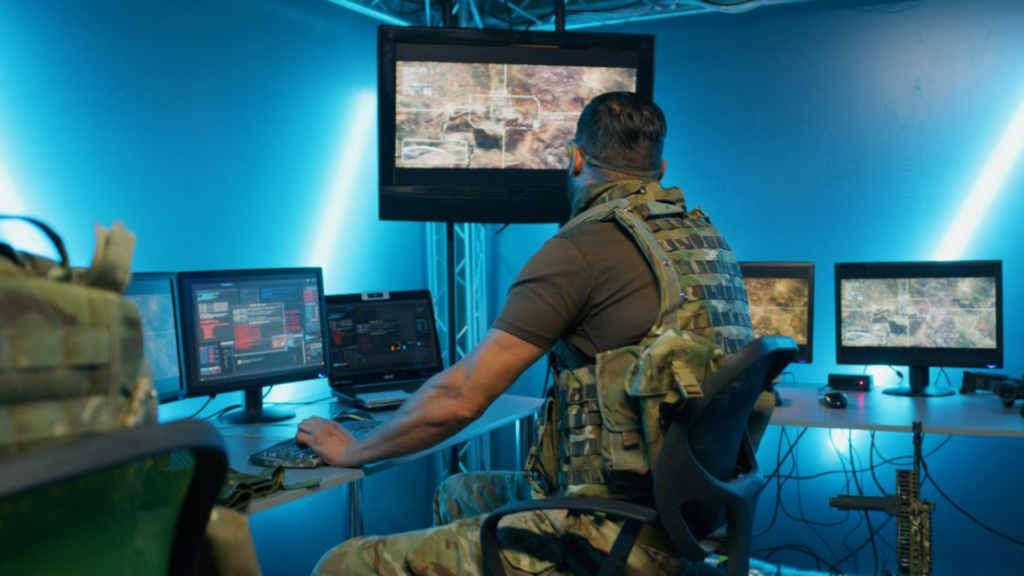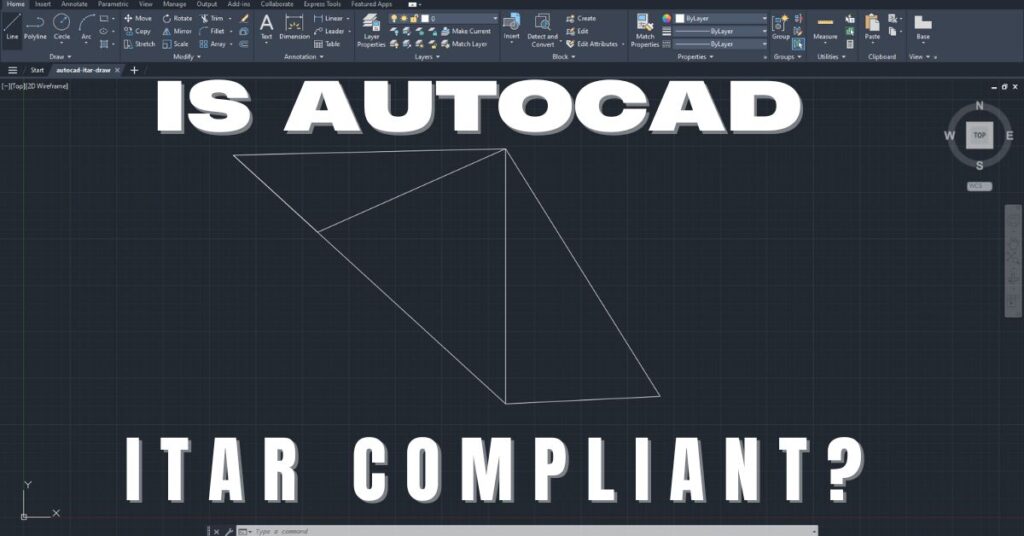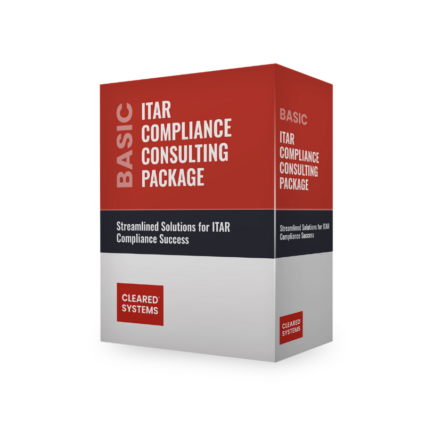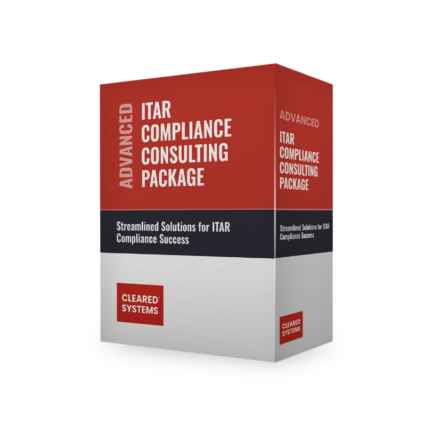ITAR Compliance for Manufacturers: The Ultimate Guide
Understanding and Navigating ITAR Regulations
The ITAR is one of the various U.S. laws, policies, and regulations that exist to control and monitor imports and exports. The regulation is designed to align with trade pacts, sanctions, embargoes, and other political strategies between the U.S. and other nations. ITAR aims to prevent the most sensitive technologies and information from falling into the wrong hands. Therefore, compliance with this set of regulations is of utmost importance, particularly for the manufacturers, exporters, and brokers of the items listed in the USML. Entities or individuals that offer defense services should also achieve ITAR compliance. Additionally, technical data related to defense items or services should be handled in a manner compliant with the regulation. In this article, we’ll guide you through the importance of ITAR compliance for manufacturers and the steps needed to maintain compliance.
What is ITAR Compliance?
ITAR compliance refers to the fidelity to ITAR regulations. The ITAR is a critical framework that governs the transfer and export of defense articles, services, and technical data. It is managed by the U.S. Department of State. ITAR compliance plays a critical role in protecting the U.S. foreign policy and national security interests. The regulations achieve this by preventing the unauthorized dissemination of weaponry and defense technologies to foreign individuals and entities. The USML is a list of defense articles subject to ITAR, which are vital for strategic and military purposes. Manufacturers of items in the USML must achieve ITAR compliance, including obtaining the required approvals and licenses from the DDTC. This way, they can guarantee the protection of defense-related information and technologies, aligning with U.S. national security goals.
Key ITAR Regulations for Manufacturers
- Registration with the Directorate of Defense Trade Controls (DDTC): Manufacturers must register with the DDTC, a division of the U.S. Department of State, responsible for regulating defense trade.
- Export Control Classification Number (ECCN): Determine if your products or services fall under the USML and obtain the appropriate ECCN.
- License Management: Obtain the necessary export licenses and agreements before exporting controlled items.
- Technical Assistance Agreements (TAA): Establish TAAs for the transfer of technical data to foreign entities or persons.
- Recordkeeping: Maintain records of export activities, including licenses, agreements, and export documentation, for a minimum of five years.
Critical Components of ITAR Compliance
Registration by the Department of State
To achieve ITAR compliance, manufacturers of defense articles must register with the DDTC. This includes submitting a completed registration form and paying a fee to the DDTC. This registration form requires comprehensive information on a manufacturer’s organizational structure, ITAR-related activities, and ownership. After obtaining approval, the manufacturer is given a registration code, which must be included in all documents related to exports. The registration code of a manufacturer starts with an “M,” followed by 4/5 digits. This code is proprietary to the manufacturer. However, registration doesn’t authorize the registrant to export ITAR-controlled technical data or items; they must still achieve compliance with other requirements.
Proper classification
The other critical requirement for ITAR compliance is a proper classification of ITAR-controlled technical data, services, and articles. Manufacturers should accurately determine if their items and technical data are under ITAR jurisdiction. This helps determine if they need an export license and should meet other ITAR requirements. Classification involves analyzing the technical data or specifications of an article and its intended use to determine if it falls under the CCL or the USML. Technical data and articles on the USML are subject to ITAR, while those on the CCL are subject to EAR . A proper classification assists a manufacturer in determining whether an export license is necessary. It also aids in achieving ITAR compliance with other requirements such as recordkeeping, documentation, and training. Additionally, manufacturers of ITAR-controlled items should maintain updated records of their classification determinations to show ITAR compliance.
Obtaining licenses
Manufacturers of USML items must get approvals and licenses from DDTC before engaging in activities under ITAR jurisdiction. The license application process entails submitting comprehensive information about the item or technical data. This includes its destination, classification, and intended end-use. Each license application is reviewed by the DDTC on a case-by-case basis, meaning the approval process takes time. The manufacturer should also comply with any restrictions or conditions specified under the license, including reporting requirements and end-use restrictions.
Training and documentation
Manufacturers should provide training to all their employees engaged in activities that fall under ITAR jurisdiction. They should also maintain a comprehensive documentation of their training programs. Documentation is critical for ITAR compliance. Thus, manufacturers should maintain up-to-date and accurate records of their ITAR-related activities. These include but are not limited to licensing information and classification determinations. Such documents can help the manufacturer demonstrate ITAR compliance and respond to any audits or inquiries by regulatory agencies.
Record keeping
To be ITAR compliant, manufacturers must maintain up-to-date and accurate records of all their activities that fall under ITAR purview. Such records include, sales, exports, and records of any other transfers of ITAR-controlled technical data and items. These records must be kept in a way that they are not only accessible but also understandable to authorized personnel. They should be maintained for 5 years at a minimum. Additionally, manufacturers should secure and protect the records from unauthorized disclosure or access to avoid any potential financial and legal consequences.
Adherence to end-use limitations
Manufacturers ITAR-controlled items must conduct due diligence on their partners, customers, and other end users to comply with end-use limitations. This ensures the entities to a transaction are legitimate and authorized. They should also keep records of the due diligence efforts. Further, the manufacturers should implement necessary measures to monitor and prevent the diversion of or unauthorized use of ITAR-controlled technical data and items.
Best Practices for Maintaining ITAR Compliance
- Develop an Export Compliance Program (ECP): An ECP outlines procedures for handling controlled items and ensures that employees understand and follow ITAR regulations.
- Employee Training: Regularly train employees on ITAR compliance, export controls, and the importance of safeguarding controlled technology.
- Technology Control Plans (TCP): Implement a TCP to prevent unauthorized access to controlled technology or data within your organization.
- Internal Audits: Conduct periodic internal audits to identify potential compliance gaps and areas for improvement.
- Risk Assessment: Continuously assess your organization’s risk for ITAR violations and adjust your compliance program as necessary.
Conclusion
ITAR compliance is critical for the manufacturers of any defense item listed in the USML. Violations of the ITAR have severe consequences, including debarment, jail time, civil and criminal penalties, and asset forfeiture. Thus, compliance with the regulations shields a manufacturer from incurring substantial penalties. But that’s not all; ITAR compliance also helps manufacturers preserve their reputation within the defense industry. By being ITAR compliant, they also play their part in protecting the U.S. foreign policy and national interests. Therefore, the implementation of a robust ITAR compliance program is not just a regulatory requirement but a cornerstone for success in this sector. This highly regulated sector demands stringent compliance, and a well-structured program can provide the necessary framework for it.
For ITAR training or consulting, don’t hesitate to contact us. Our team of highly qualified export compliance experts will guide you through the complex interwebs of the ITAR, ensuring that you achieve compliance in the end.
Share in Social Media
See More Case Studies

Securing Defense Contracts: A DFARS 252.204-7012 Compliance Case Study
Discover how Cleared Systems helped a Federal Contractor successfully achieve DFARS 252.204-7012 compliance by strengthening its cybersecurity posture, giving it a competitive edge when bidding for DoD Contracts.

What is GCC High? For ITAR & CMMC 2.0
Microsoft 365 Government Community Cloud (GCC) High is a specialized cloud solution tailored for U.S. federal, state, local, tribal, and territorial government organizations, as well as for contractors who hold or process data subject to specific security regulations. In this article, we will explore the features, benefits, and differences between Microsoft 365 GCC High and other Office 365 offerings.

Is AutoCAD ITAR Compliant? A Comprehensive Guide for Defense Manufacturers
Defense contractors and manufacturers working with sensitive military technologies face a critical question when selecting computer-aided design software: Is AutoCAD ITAR compliant? This question becomes

How to Get Help in Windows: Guide to Security and Compliance Support
In today’s digital landscape, ensuring your computer systems are secure and compliant with industry regulations is essential for both businesses and individuals. Windows, as one

Microsoft Copilot for GCC High: Enhancing Security and Compliance
In today’s fast-evolving digital landscape, organizations that handle sensitive data, particularly those in government sectors or defense contractors, face growing pressure to maintain strict security
Partner with Us for Compliance & Protection
We’re happy to answer any questions you may have and help you determine which of our services best fit your needs.
Your benefits:
- Client-oriented
- Security
- Compliance
- Peace of mind
- Efficiency
- Trust
What happens next?
Schedule an initial meeting
Arrange a discovery and assessment call
Tailor a proposal and solution



